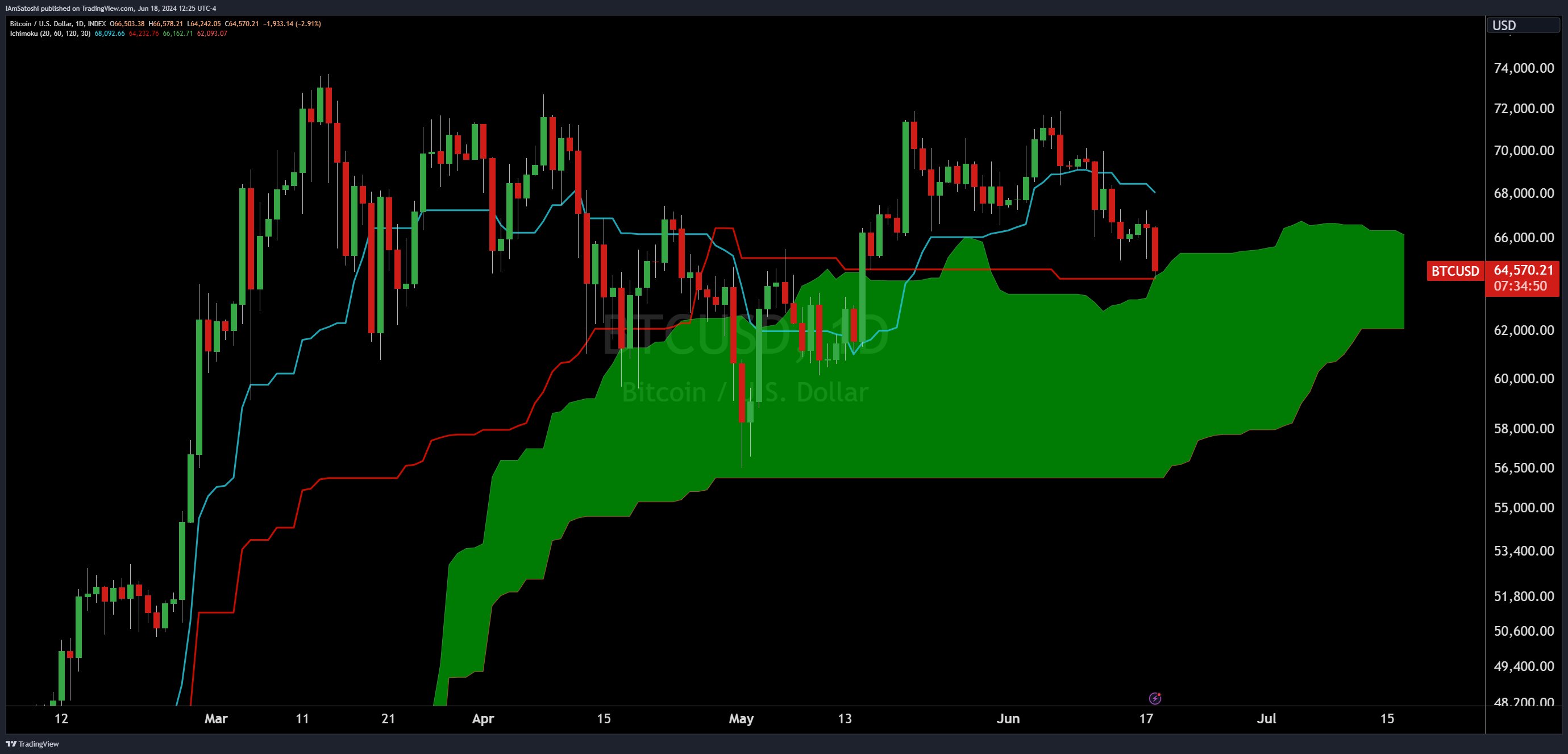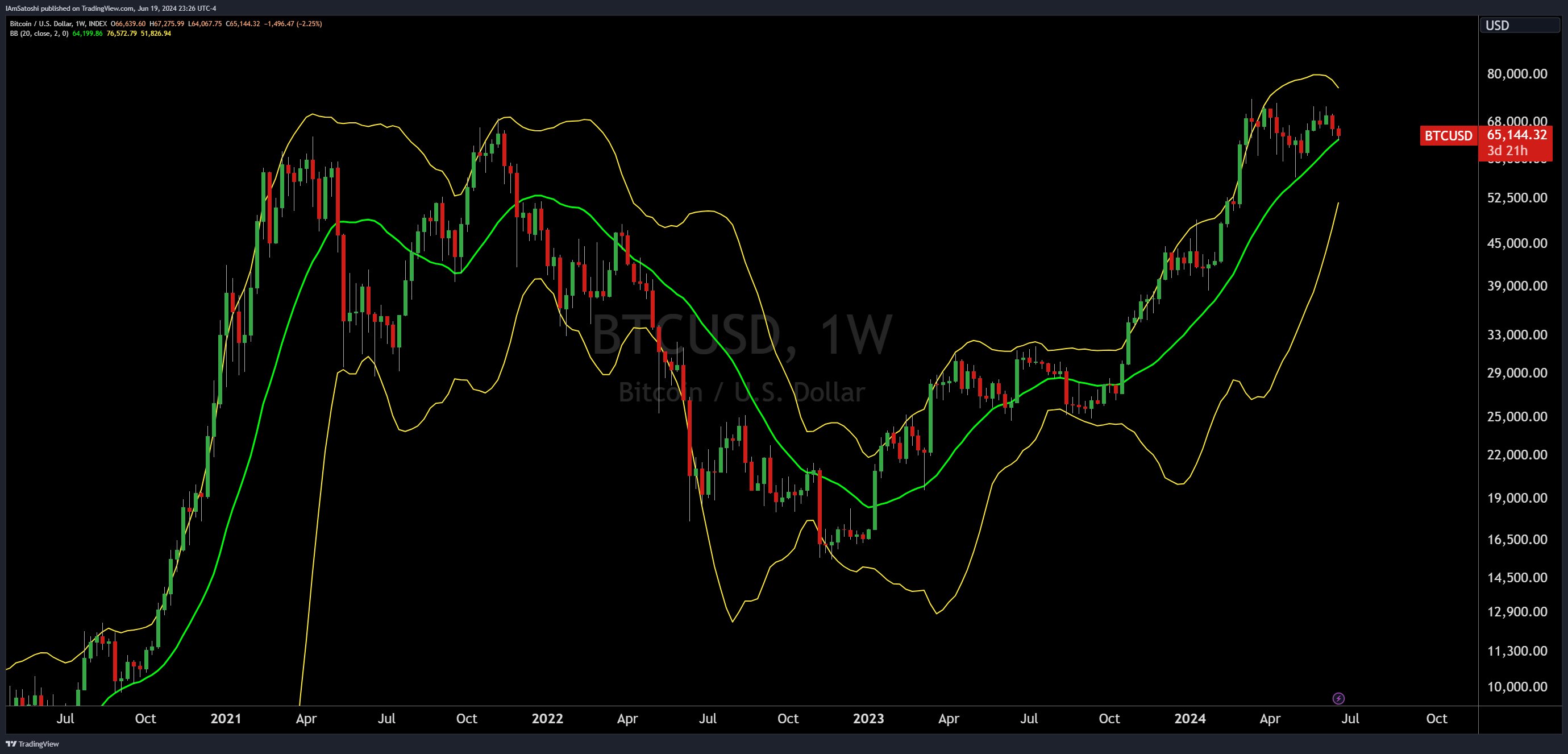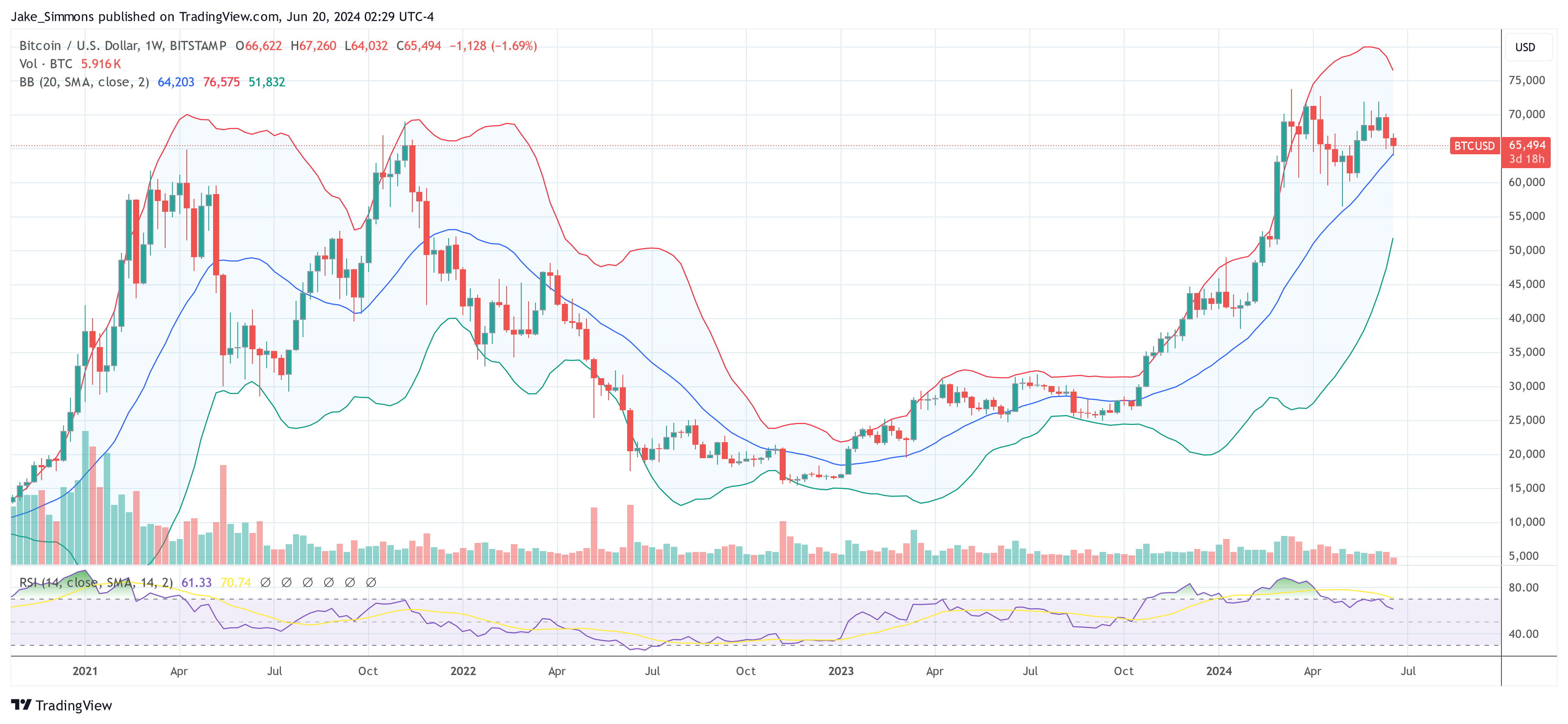Josh Olszewicz, a renowned crypto analyst, recently shared criticism insights in the immediate future of the Bitcoin price, using two technical analysis frameworks: the Ichimoku Cloud and Bollinger Bands. These tools pinpoint crucial moments that could determine the trajectory of the Bitcoin price in the short to medium term.
Bitcoin Analysis Using the Ichimoku Cloud
In the first chart showing the daily Ichimoku Cloud, Olszewicz highlights a pivotal moment for Bitcoin as it navigates this complex indicator. The Ichimoku Cloud, known for providing support and resistance levels, as well as momentum and trend direction, showcases Bitcoin trading at the edge of the cloud. This is important because a break above the cloud could suggest a bullish outlook, while a decline below the cloud often indicates bearish momentum.

Here, Olszewicz highlights a do or die scenario for Bitcoin. The price of Bitcoin, last noted on the chart at $64,570, is approaching the edge of the cloud. “No one likes an ultimatum, but here in the daily BTC cloud it is make or break,” he warned.
Related reading
An important aspect of the Ichimoku Cloud map is the relationship between the Tenkan-Sen (red line) and the Kijun-Sen (blue line). The Tenkan-Sen, a shorter-term moving average, remains above the Kijun-Sen, a longer-term moving average, indicating positive near-term momentum.
Bollinger Bands weekly analysis
Olszewicz takes to the weekly chart equipped with Bollinger Bands and discusses another potential turning point. Bollinger Bands serve as a measure of volatility: narrow bands indicate low volatility, while wider bands indicate higher volatility. The Bitcoin chart shows a tightening of these bands around the current price level, which can precede a significant price move, known as a ‘Bollinger Band Squeeze’.

The fact that Bitcoin is hovering just above the centerline (the 20-period moving average) of the Bollinger Bands at $64,238 indicates a weak balance between buying and selling forces. However, the narrowing of ranges is particularly notable as it could lead to a decisive breakout or collapse depending on other market factors and trader sentiment.
If Bitcoin breaks below the midline, the next support could be found in the lower Bollinger Band, currently positioned around $51,792, which could mark a significant price drop. Conversely, if Bitcoin were to bounce off the midline and gain upward momentum, it could target the upper Bollinger Band, located at around $76,684, indicating a potential rally.
Related reading
The analyst points out that understanding the implications of a Bollinger Band Squeeze can be crucial for traders, as such periods of low volatility often end in sharp price moves. “If you didn’t like the Cloud ultimatum, here are the weekly BBands,” Olszewicz noted.
Although both charts use different analytical tools, they converge on a similar story: Bitcoin is at a potential inflection point that could define its price action for the coming days or weeks. Current levels close to the upper limits of both the Ichimoku Cloud and the Bollinger Bands underline the tension in the market.
At the time of writing, BTC was trading at $65,494.

Featured image created with DALL·E, chart from TradingView.com
